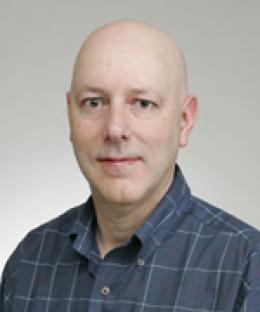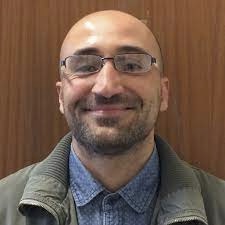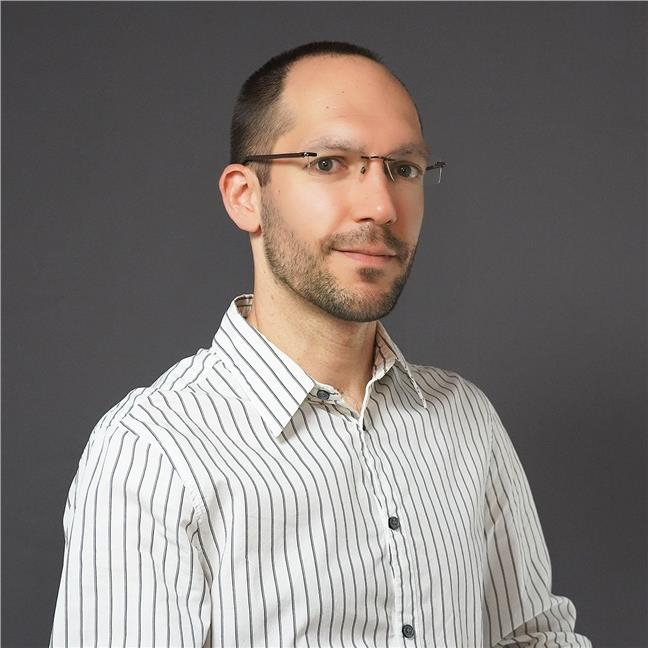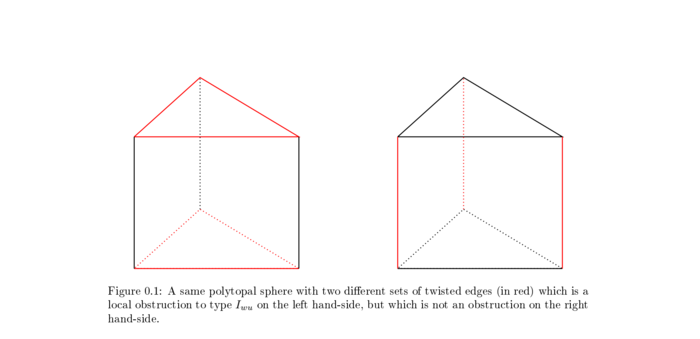Gjesteforelesninger og seminarer - Side 2
The frictional behavior of surfaces is a problem of great scientific and practical significance. Recent progress in molecular scale modeling allows us to determine the coefficient of friction for nanoscale surfaces from first principles using molecular dynamics modeling. However, inverse design, that is, designing surfaces with specific frictional propeties is still a complex and largely unsolved challenge in part due to the enormous space of possible surface configurations. Here, we demonstrate how we can use physical forward modeling to find the frictional properties of a set of surfaces that can serve as a training set to design machine learning models. In this talk, we demonstrate both discriminative and generative models for frictional surface design and analyze what physical principles the machine learning models have learned in this process.
his talk discusses a nonparametric inference framework for occupation time curves derived from wearable device data. Such curves provide the total time a subject maintains activity above a given level as a function of that level. Taking advantage of the monotonicity and smoothness properties of these curves, we develop a likelihood ratio approach to construct confidence bands for mean occupation time curves. An extension to fitting concurrent functional regression models is also developed. Application to wearable device data from an ongoing study of an experimental gene therapy for mitochondrial DNA depletion syndrome will be discussed. Based on joint work with Hsin-Wen Chang (Academia Sinica).
During this cold winter in Oslo, we certainly all have experienced the unsteady nature of friction and the sudden loss of stress bearing capacity that initiates catastrophic sliding. A similar kind of frictional rupture arises at the onset of a wide variety of natural disasters that includes earthquakes, landslides, as well as snow avalanches. In this talk, I will focus on the incipient stage of these catastrophic events that is characterized by the local nucleation of failure and its rapid propagation towards intact regions of the material. I will discuss how the analogy to fracture mechanics can be exploited to describe the dynamics of these rupture fronts and develop quantitative models to characterize the onset of failure in geomaterials.
Donaldson-Thomas and Pandharipande-Thomas theory are two approaches to counting curves on projective threefolds in terms of their moduli spaces of sheaves. An important special case in understanding the DT/PT correspondence the equivariant geometry of affine three-space with the natural coordinate action of the rank 3 torus. I will show how one can use new wall-crossing techniques to prove the equivariant K-theoretic DT/PT correspondence in this situation, which was previously known only in the Calabi-Yau limit.
This is part of an ongoing project with Felix Thimm and Henry Liu in which we aim to prove wall-crossing for virtual enumerative invariants associated to equivariant CY3 geometries by extending a vertex algebra formalism for wall-crossing developed by Joyce.
Bone stress injuries affect athletic populations who undertake activities in which bones are repeatedly loaded. In order to understand and reduce the risk of bone stress injuries, we need to quantify the loading experienced by the bones during activities such as running. Bone loading is difficult to quantify as the magnitudes of stress are influenced to a large extent by the magnitude of muscular forces acting on the bone. Musculoskeletal modelling, ranging from very simple to very complex approaches, can be used to estimate the internal loading experienced by the bone during running. This has allowed us to explore factors such as speed, slope and step length and their influence on bone loading during running. However, in order to truly understand risk of stress injuries this needs to be taken out of the lab and in-field. This talk will consider what we know and the limitations to current understanding.
Gromov—Witten invariants are virtual counts of curves with prescribed conditions in a given algebraic variety. One of the main techniques to study Gromov—Witten invariants is degeneration. The degeneration formula expresses absolute Gromov—Witten invariants in terms of relative Gromov—Witten invariants of algebraic varieties with tangency conditions along boundary divisors.
Relative Gromov—Witten invariants with only one relative marking are relative invariants with maximal contacts along the unique relative marking. The local-relative correspondence proved by van Garrel—Graber—Ruddat states that genus zero relative invariants with maximal contacts are equal to local Gromov—Witten invariants of a line bundle. Local invariants are usually easier to compute. However, The degeneration formula usually involves relative invariants beyond maximal contacts (i.e. with several relative markings). I will explain a generalization of the local-relative correspondence beyond maximal contacts, hence determine all the genus zero relative invariants that appear in the degeneration formula.
This is based on joint work with Yu Wang.
Qombine seminar by Joakim Bergli, Department of Physics (UiO)
The climatic ocean wave spectrum serves as a pivotal tool in comprehending the long-term characteristics and variations of wave patterns across different regions of the world's oceans. The presentation explores the methodologies employed to derive wave spectra from observational data. Basically, consists of a statistical approach that provides a quantitative understanding of the variability and extremes of wave conditions. In essence, an ocean wave spectrum is a representation of the distribution of energy among different wave frequencies and wavelengths. So, engineers rely on this valuable information to mitigate risks and design solutions that can withstand the dynamic forces of ocean waves. However, it is necessary to present such information in a robust and practical mode to better comprehend the variations. In this way, a robust and resistant approach will be presented to define such variabilities, thus reducing uncertainties and representing the climatic wave spectrum in a compact and informative way.
Future robots need to be robust and adaptable, and new design approaches are needed for new production methods. I will talk about my research in using evolutionary algorithms and biologically inspired methods with the aim of having more intelligent, robust, and adaptive behavior in robots. I will give a short introduction to some of the algorithms and show how we apply them in our robotic platforms for exploring automatic design and adaptation.
C*-algebra seminar by Gaute Schwartz (University of Oslo)
Engineering principles to develop advanced biomaterials and scaffolds. This study focuses on utilising engineering principles to facilitate new bone growth, specifically in designing and fabricating bone scaffolds. The core of our investigation lies in applying titanium dioxide (TiO2) scaffolds, which have emerged as promising candidates due to their osteoconductive properties and the potential for enhancing bone tissue engineering.
Our research aims to bridge the gap between engineering and biology by harnessing fluid mechanics and material science to create scaffolds that mimic the natural bone environment. By comparing TiO2 scaffolds with commercial porous calcium phosphate biomaterials under simulated perfusion culture conditions, we delve into the mechanical and fluidic stimuli that are crucial for bone regeneration. The study emphasises the role of fluid dynamics to make better “spare-parts” for the human body, highlighting the importance of permeability, mechanical load transfer and wall shear stress with a porous ceramic.
Furthermore, we validate our fluid mechanic simulations with the impact of dynamic seeding techniques. Our findings demonstrate the superiority of dynamic culture conditions in enhancing the expression of bone-related proteins and genes, thereby facilitating more effective bone regeneration. In addition, the study presents a clinical trial that shows that these porous bioceramic functions well in patients. The trial's outcomes confirm the potential of TiO2 scaffolds for in vivo bone formation and showcase the successful integration of engineering principles in the development of biomaterials for tissue engineering.
This research underscores the pivotal role of engineering in advancing tissue engineering and biomaterials science. By leveraging engineering principles to optimise scaffold design and functionality, we pave the way for innovative strategies in bone regeneration, offering new hope for patients requiring bone tissue reconstruction.
Paper cuts are a minor nuisance, but they can lead to life-threatening microbial infections. The physical processes that determine whether paper cuts into the skin, however, remain poorly understood. To explore skin-paper interactions, we designed an experiment in which a piece of paper contacts an artificial finger made from ballistic gelatin. Our experiments suggest that the paper thickness is one of the most important parameters in determining cutting efficacy. A relatively thin sheet often buckles before cutting is initiated, whereas the predominant interaction with thick sheets is indentation. Our preliminary data indicate that a successful paper cut is physically impossible outside a relatively narrow range of thicknesses for a given angle. Finally, the optimal paper cut is explored, and the influence of skin properties and cutting angle is discussed.
C*-algebra seminar by Corey Jones (North Carolina State University)
Controlling the spontaneous ruptures of nanoscale liquid thin films is crucial to various applications such as solar cell manufacturing. Over the past few decades, theoretical work based on the long-wave theory of thin liquid films has successfully identified a critical film height, below which the surface nanowaves become linearly unstable, leading to spontaneous rupture. This dewetting in the ‘spinodal regime’ has been repeatedly confirmed in experiments using atomic force microscopy on polymer films. However, ruptures are also observed for thicker films (linearly stable) in a different manner. It is believed that the random (Brownian) movement of particles is the cause of dewetting in this ‘thermal regime’ but the theoretical framework predicting the rupture is missing. In this talk, we present a theory to account for the rupture of a two dimensional linearly stable thin film by utilizing fluctuating hydrodynamics and rare events theory. By modelling the film dynamics with the stochastic thin-film equation (STF) and solving it numerically, we observe rupture in the linearly stable thermal regime and record the average waiting time for rupture. We show that the STF can be rearranged into the form of a gradient flow, which allows us to apply Kramer’s law from the rare events theory to obtain a theoretical prediction of the average waiting time. Molecular dynamics (MD) simulations are also performed and we find good agreements between the numerics, the prediction, and the MD.
Abstract:
The Section 4 seminar for the Spring 2024 will be held Thursdays 14:15–15:00 in room 1020
Our project partner Statkraft owns and operates several hydropower plants in Brazil and requires information about the future potential for hydropower production in this region. To provide inflow projections for the next several decades, we use climate model output in combination with a regression model that links meteorological variables such as precipitation and temperature to inflow over various catchments in the region. The relatively short time period for which observation data are available raises concerns about overfitting. We therefore explore an alternative model fitting approach that retains the original, easily interpretable regression model but estimates the regression coefficients within an artificial neural network (ANN) framework which permits spatial and temporal regularization and thus prevents overfitting. We show some examples of the inflow projections obtained with that methodology and discuss some caveats and limitations.
Protein condensates inside human cells are liquid-like droplets composed of protein and RNA. These condensates interact with the heterogeneous, active and dense environment of the cytoplasm, crossed by various cytoskeletal filaments such as microtubules and actin. Wetting interactions with the cytoskeleton lead to stereotypical positioning of such protein droplets inside the cell. Using statistical physics approaches, we identified complementary functions of filamentous actin and microtubules: protein droplets couple to actin’s native dynamics in the cell through steric interactions leading to directional motion towards the cell center. Microtubules (and their molecular building-blocks), on the other hand, act as Pickering agents and engage in energetically favorable wetting interactions that lead to a robust localization of protein condensates in microtubule-rich regions of the cell. These interactions are non-specific and ultimately arise from different affinities (contact angles) between condensate and filament, suggesting that similar mechanisms may govern localization of other liquid-like phases within the cell.
C*-algebra seminar by Mathias Palmstrøm (Norwegian University of Science and Technology)
What happens if we paint a steel box and put a water drop on it before it gets dry? The arcane curiosity arises: Will the paint remain the same or get destroyed? The answer is that it depends on the interaction between the surfaces and the length scale involved. My doctoral work was to study the stability of thin liquid films under aqueous drops. Slippery surfaces were used as a model system because they provide a frictionless surface with low contact angle hysteresis (<2°). We found that thin liquid films are stable on hydrophobic surfaces, while on hydrophilic surfaces, they rupture and dewet into droplets. We observed different dewetting patterns depending on the film thickness and slip. However, films on hydrophobic surfaces are stable but can be destabilized using external perturbations like an electric field. Due to the electric field, capillary waves are generated, and their evolution matches very well with a linear stability analysis. The reversible dewetting behavior with the applied field is an interesting observation of our work. With the applied frequency, the wavelength of the capillary waves does not follow the classical linear stability analysis; we modified the stability analysis, which agrees with our experimental findings. Finally, the coalescence of dewetted droplets and anomalous diffusive behavior with the applied external field will be discussed
Phase tropical surfaces can appear as a limit of a 1-parameter family of smooth complex algebraic surfaces. A phase tropical surface admits a stratified fibration over a smooth tropical surface. We study the real structures compatible with this fibration and give a description in terms of tropical cohomology. As an application, we deduce combinatorial criteria for the type of a real structure of a phase tropical surface.
Phase tropical surfaces can appear as a limit of a 1-parameter family of smooth complex algebraic surfaces. A phase tropical surface admits a stratified fibration over a smooth tropical surface. We study the real structures compatible with this fibration and give a description in terms of tropical cohomology. As an application, we deduce combinatorial criteria for the type of a real structure of a phase tropical surface.




